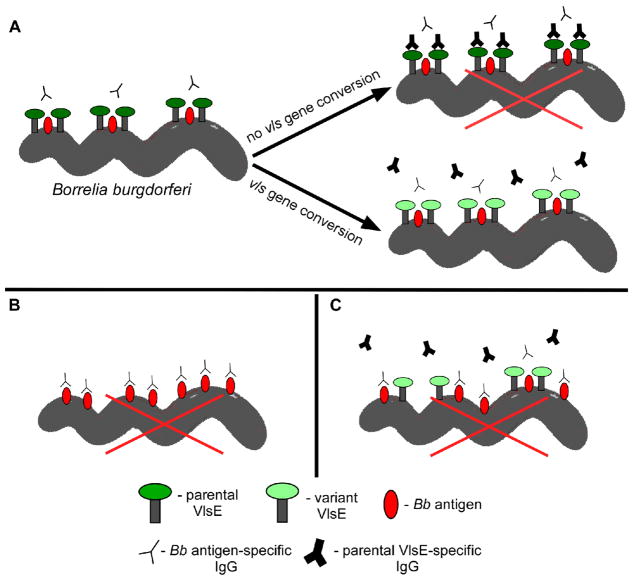FIG. 3.
Model for VlsE-mediated protection of B. burgdorferi surface antigens. (A) Shortly after host infection, up-regulation of vlsE expression leads to surface localization of the encoded lipoprotein. Interaction of VlsE with other proteins results in a complex that works to shield epitopes of these surface antigens. Continued vls gene conversion leading to production of VlsE variants is necessary to avoid killing by antibodies raised against the parental and subsequent VlsE variants, allowing for sustained epitope masking. (B) Absence or (C) low expression of VlsE allows binding of antibodies to B. burgdorferi surface antigens that ultimately leads to spirochete death (red Xs). A legend indicating the identity of the various molecular depictions is provided at the bottom of the figure. IgG, immunoglobulin G (reprinted with permission from the American Society for Microbiology, Copyright 2016).27

